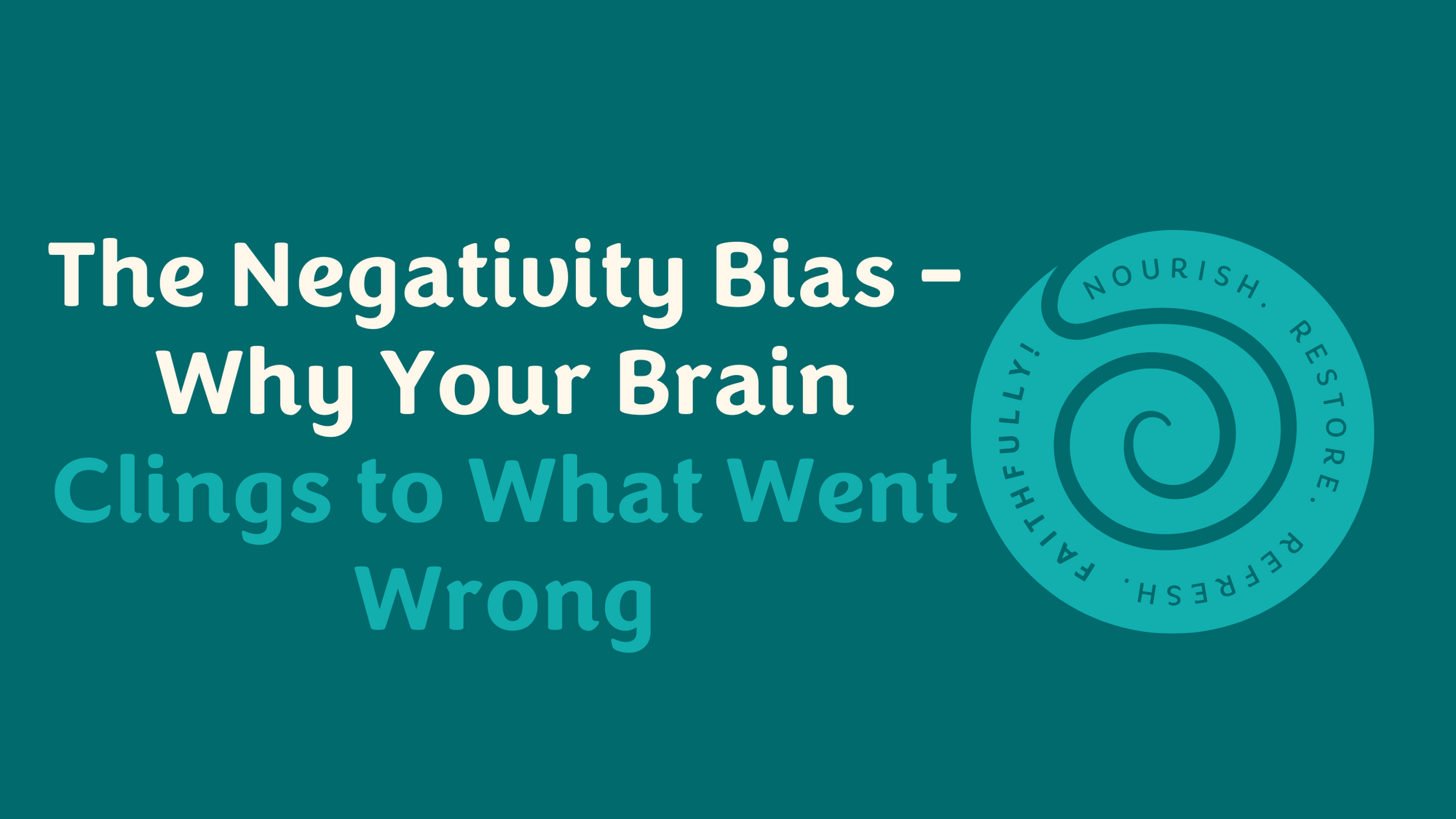Have you ever had a great day, got through your to-do list, received a compliment, maybe even got a little good news but then one negative comment, thought, or moment took over your entire mindset?
You’re not alone. In fact, your brain is wired that way.
It’s called The Negativity Bias, and it’s a psychological tendency that explains why our minds cling more tightly to criticism than praise, to fear over hope, and to failure over success.
But just because it’s how your brain works by default, doesn’t mean you have to stay stuck in it.
Today, we’re breaking down what the negativity bias is, why it feels so real, and how you can start shifting your thoughts toward peace, power, and purpose, one thought at a time.
What Is the Negativity Bias?
In simple terms, the negativity bias is the brain’s built-in tendency to give more weight to negative experiences than positive ones.
This shows up in ways like:
-
Replaying a mistake for days after it happens
-
Holding onto criticism longer than compliments
-
Obsessing over what went wrong, even when most of the day went right
-
Feeling like one negative moment defines everything
From a neuroscience standpoint, this is your brain’s way of trying to keep you safe. Thousands of years ago, our ancestors survived by being hyper-aware of danger. A rustle in the bushes wasn’t just noise, it could be a threat. So our brains learned to prioritize bad over good to avoid harm.
Fast forward to today, and we’re still carrying that same wiring… but now it shows up in boardrooms, text messages, mirror reflections, and midnight overthinking sessions.
How It Affects Your Everyday Life
The negativity bias doesn’t just affect your thoughts, it shapes your entire experience of life.
Let’s say you’re at work. You receive great feedback from your manager in your performance review… but they also mention one area of improvement. Guess what your brain focuses on? Not the praise. Not the growth. Just the one area that “wasn’t good enough.”
Or maybe you post something online that resonates with people. Dozens of encouraging comments pour in. But one person says something rude, and now you’re stuck. You question your worth, your presence, and whether you should’ve spoken at all.
That’s the negativity bias in action. It hijacks your peace, your self-esteem, and your momentum.
The Cost of Staying Stuck in It
Here’s the truth:
-
You can’t build confidence if you only replay your mistakes.
-
You can’t receive love fully if you’re only scanning for rejection.
-
You can’t move forward if your brain is always dragging you back.
The negativity bias keeps you emotionally stuck. And even worse, it can distort your sense of self.
Instead of saying, “I made a mistake,” you begin to think, “I am a mistake.”
Instead of thinking, “That was a hard season,” you conclude, “Nothing ever works out for me.”
But there’s good news: you can retrain your brain. You can learn to notice the bias when it creeps in and respond to it with truth.
How to Break Free from the Negativity Bias
You don’t have to ignore hard things. But you also don’t have to give them all the power. Here’s how to gently shift your mindset:
1. Catch the Pattern
The first step is noticing when the negativity bias is at play.
Start paying attention to how you react after:
-
Making a small mistake
-
Receiving mixed feedback
-
Having an emotionally tough conversation
-
Reflecting on your day
If your mind jumps straight to the worst part or replays negative details on a loop, that’s the bias.
And simply naming it matters. Instead of saying, “Why do I always think like this?” you can say, “This is my brain’s negativity filter talking, not the full truth.”
2. Balance the Story
Your brain will always be quick to highlight what went wrong. So you have to intentionally highlight what went right.
Try this simple practice: For every one negative thought, write down two positive facts from the same moment.
Example:
Negative thought: “I stumbled during that presentation.”
Balanced thoughts:
-
“But I showed up and shared valuable insight.”
-
“And multiple people told me they appreciated my honesty.”
This practice doesn’t erase the negative, it balances it with truth.
3. Let Go of the “All or Nothing” Lens
The negativity bias loves to operate in extremes:
-
“I always mess things up.”
-
“No one cares what I have to say.”
-
“Nothing ever works out.”
These absolute statements feel real in the moment, but they’re rarely accurate.
Challenge yourself to replace “always” and “never” with something more honest and grounded, like:
-
“I had a tough moment, but that doesn’t mean I always will.”
-
“Some people may not get me, but many others do.”
-
“Today was hard, but not every day is like this.”
You’re teaching your brain to hold more than one truth and that’s emotional maturity.
4. Celebrate Small Wins on Purpose
Your brain won’t naturally remember the good. So you have to intentionally celebrate it.
At the end of each day or week, ask yourself:
-
What went well today?
-
What did I do that made me proud?
-
What progress am I making that I haven’t acknowledged yet?
Write it down. Speak it out loud. Make it visible.
Because the more you name your wins, the more your brain learns to see them.
5. Create a “Truth File”
This is a simple but powerful practice.
Start collecting proof of your growth, impact, and value. This could be:
-
Encouraging texts or DMs
-
Screenshots of compliments or affirmations
-
Notes of things you’ve overcome
-
Journal entries about breakthroughs
When the negativity bias creeps in, open your file and remind yourself of what’s real.
Because even if your brain forgets your goodness, your truth file will hold it for you.
The Bias Isn’t Bad But It Can’t Be in Charge
Here’s the thing: your negativity bias isn’t evil. It’s just outdated protection. It wants to shield you from pain but in doing so, it can block you from joy, growth, and connection.
Your goal isn’t to eliminate it entirely. It’s to build a stronger, wiser voice inside you that knows how to put fear and failure in their place.
A voice that says:
“I see what went wrong. But I also see what went right.”
“I’m not defined by one hard moment.”
“I’m still learning. And that’s okay.”
You Deserve to See Yourself Clearly
The negativity bias will always fight for the mic. But you don’t have to let it dominate the conversation.
You are more than your flaws. More than your off days. More than the harsh voices that try to replay your past.
You’re evolving.
You’re healing.
You’re showing up, again and again.
And that’s worth noticing.
So the next time your brain starts to spiral on what went wrong, pause. Breathe. And remind yourself:
What went right still matters.
And so do you.
Keep the Faith 💚
























